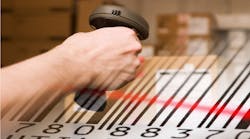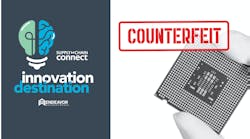Download this article in PDF format.
As counterfeiters come up with new ways to produce, package and market their illegal products, companies that specialize in anti-counterfeiting packaging have been using more holograms, 2D barcodes, forensic methodologies, mass encoding, radio frequency identification (RFID) and other innovations to help identify and intercept the release of those products into the marketplace.
These innovations are helping companies address a counterfeit problem that currently exceeds $600 billion in total world trade (up from $30 billion in the 1980s). That number may soon exceed $1.8 trillion, which is more than the gross domestic product (GDP) of most countries. According to data on counterfeiting and international trade, the total value of counterfeit and pirated goods was about $1 trillion in 2013, and is expected to grow to close to $3 Trillion in 2022.
“The explosion of e-commerce during COVID has created a picture-perfect market channel for counterfeit goods, as it is easy to shut down a website selling these products at the request of Amazon or Alibaba, and open up another one the next day,” Robert Handfield, Ph.D., writes in Counterfeiting is on the rise, and projected to exceed $3 trillion in 2022.
“Evidence shows that e-commerce sales have grown from 10% of retail sales to more than 30% during COVID,” Handfield continues. “This has offered a perfect opportunity for counterfeiters to exploit consumers buying products from their desktop.”
Food, Beverage and Pharma
Driven by strong demand from the food, beverage, pharmaceutical, healthcare and other sectors, the anti-counterfeit packaging segment is stepping up to the plate to help companies and consumers address the growing volume of counterfeit goods. According to MarketsandMarkets™, the anti-counterfeit packaging market is expected to reach $211.3 billion in revenues by 2026, up from $117.2 billion this year.
The sector is currently posting a compound annual growth rate (CAGR) of 12.5%, with pharmaceutical companies ranking among the largest users of such packaging. Some of the largest manufacturers of anti-counterfeit packaging include Avery Dennison, CCL Industries Inc., 3M Company, DuPont, Zebra Technologies Corporation, Applied DNA Sciences Inc., Savi Technology, Inc., and Authentix, Inc.
“The industry is expected to witness high growth on account of increasing concerns regarding the dilution of brand identity by the leading manufacturers across the globe,” the research firm reports. It also says that technological improvements in packaging production have led to the introduction of more highly-secure packaging for use in pharmaceutical industries.
In Flexible Packaging, Sam Paul highlights some of the newest anti-counterfeit packaging innovations such as:
- ·SnapDragon’s Swoop technology, which detects counterfeit products in real-time and removes the links across online platforms.
- Applied DNA Sciences, Inc.’s Encrypted Optical Markers for Security Applications, which offers rapid, secure, real-time in-field authentication of a DNA-tagged substrate through an encrypted fluorescing signal when paired with a decryptant.
- ·Applied DNA Science also makes the SigNature molecular ink for tagging, testing and tracking products and packaging along the supply chain.
- Toppan Printing’s ID-NEX is a cloud-based service with smartphone authentication utilizing the S-White hologram, which facilitates authentication and traceability using QR codes scanned with smartphones.
Asia-Pacific Dominates
Within the anti-counterfeit packaging segment, mass encoding is in the biggest demand right now. When supported by software, encoded products permit product tracking through the various nodes of logistics and supply chain management operations.
Barcodes, digital mass serialization, and digital mass encryption are the various options used for mass encoding the market for thermal paper-based labels, which has also experienced a rise in its demand, according to MarketsandMarkets.
Geographically speaking, companies located in Asia-Pacific—namely, China and India—will be among the biggest users of the anti-counterfeit packaging market during the forecast period (2021-2026), the firm reports. “China is projected to account for the largest market share,” it adds, “and dominate the Asia-Pacific anti-counterfeit packaging market in 2021.”








